p-tolylmethanol
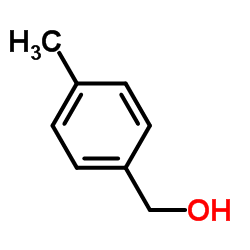
p-tolylmethanol structure
|
Common Name | p-tolylmethanol | ||
|---|---|---|---|---|
| CAS Number | 589-18-4 | Molecular Weight | 122.164 | |
| Density | 1.0±0.1 g/cm3 | Boiling Point | 218.4±8.0 °C at 760 mmHg | |
| Molecular Formula | C8H10O | Melting Point | 59-61 °C(lit.) | |
| MSDS | Chinese USA | Flash Point | 105.0±3.5 °C | |
| Symbol |

GHS07 |
Signal Word | Warning | |
| Name | 4-methylbenzyl alcohol |
|---|---|
| Synonym | More Synonyms |
| Density | 1.0±0.1 g/cm3 |
|---|---|
| Boiling Point | 218.4±8.0 °C at 760 mmHg |
| Melting Point | 59-61 °C(lit.) |
| Molecular Formula | C8H10O |
| Molecular Weight | 122.164 |
| Flash Point | 105.0±3.5 °C |
| Exact Mass | 122.073166 |
| PSA | 20.23000 |
| LogP | 1.50 |
| Vapour Pressure | 0.1±0.5 mmHg at 25°C |
| Index of Refraction | 1.540 |
| InChIKey | KMTDMTZBNYGUNX-UHFFFAOYSA-N |
| SMILES | Cc1ccc(CO)cc1 |
| Storage condition | Store at R.T. |
Synonym:4-Tolylcarbinol; P-Methylbenzylalcohol Section 2 - COMPOSITION, INFORMATION ON INGREDIENTS
Risk Phrases: 38 Section 3 - HAZARDS IDENTIFICATION EMERGENCY OVERVIEW
Irritating to skin. Potential Health Effects Eye: Causes eye irritation. Skin: Causes severe skin irritation. Ingestion: May cause irritation of the digestive tract. Inhalation: May cause respiratory tract irritation. Chronic: No information found. Section 4 - FIRST AID MEASURES Eyes: Immediately flush eyes with plenty of water for at least 15 minutes, occasionally lifting the upper and lower eyelids. Get medical aid. Skin: Get medical aid. Immediately flush skin with plenty of water for at least 15 minutes while removing contaminated clothing and shoes. Wash clothing before reuse. Ingestion: Never give anything by mouth to an unconscious person. Get medical aid. Do NOT induce vomiting. If conscious and alert, rinse mouth and drink 2-4 cupfuls of milk or water. Wash mouth out with water. Inhalation: Remove from exposure and move to fresh air immediately. If not breathing, give artificial respiration. If breathing is difficult, give oxygen. Get medical aid. Notes to Physician: Section 5 - FIRE FIGHTING MEASURES General Information: As in any fire, wear a self-contained breathing apparatus in pressure-demand, MSHA/NIOSH (approved or equivalent), and full protective gear. During a fire, irritating and highly toxic gases may be generated by thermal decomposition or combustion. Runoff from fire control or dilution water may cause pollution. Extinguishing Media: Use water spray, dry chemical, carbon dioxide, or chemical foam. Section 6 - ACCIDENTAL RELEASE MEASURES General Information: Use proper personal protective equipment as indicated in Section 8. Spills/Leaks: Vacuum or sweep up material and place into a suitable disposal container. Clean up spills immediately, observing precautions in the Protective Equipment section. Avoid generating dusty conditions. Provide ventilation. Section 7 - HANDLING and STORAGE Handling: Wash thoroughly after handling. Use with adequate ventilation. Minimize dust generation and accumulation. Avoid breathing dust, vapor, mist, or gas. Avoid contact with eyes, skin, and clothing. Keep container tightly closed. Avoid ingestion and inhalation. Storage: Store in a tightly closed container. Store in a cool, dry, well-ventilated area away from incompatible substances. Section 8 - EXPOSURE CONTROLS, PERSONAL PROTECTION Engineering Controls: Facilities storing or utilizing this material should be equipped with an eyewash facility and a safety shower. Use adequate ventilation to keep airborne concentrations low. Exposure Limits CAS# 589-18-4: Personal Protective Equipment Eyes: Wear appropriate protective eyeglasses or chemical safety goggles as described by OSHA's eye and face protection regulations in 29 CFR 1910.133 or European Standard EN166. Skin: Wear appropriate protective gloves to prevent skin exposure. Clothing: Wear appropriate protective clothing to minimize contact with skin. Respirators: Follow the OSHA respirator regulations found in 29 CFR 1910.134 or European Standard EN 149. Use a NIOSH/MSHA or European Standard EN 149 approved respirator if exposure limits are exceeded or if irritation or other symptoms are experienced. Section 9 - PHYSICAL AND CHEMICAL PROPERTIES Physical State: Crystals Color: white - semi-transparent Odor: Not available. pH: Not available. Vapor Pressure: Not available. Viscosity: Not available. Boiling Point: 217 deg C @ 760.00mmHg Freezing/Melting Point: 59 - 61 deg C Autoignition Temperature: Not available. Flash Point: Not available. Explosion Limits, lower: Not available. Explosion Limits, upper: Not available. Decomposition Temperature: Solubility in water: Specific Gravity/Density: Molecular Formula: C8H10O Molecular Weight: 122.17 Section 10 - STABILITY AND REACTIVITY Chemical Stability: Stable at room temperature in closed containers under normal storage and handling conditions. Conditions to Avoid: Incompatible materials, dust generation, excess heat, strong oxidants. Incompatibilities with Other Materials: Acid chlorides, acid anhydrides, acids, oxidizing agents. Hazardous Decomposition Products: Carbon monoxide, irritating and toxic fumes and gases, carbon dioxide. Hazardous Polymerization: Has not been reported Section 11 - TOXICOLOGICAL INFORMATION RTECS#: CAS# 589-18-4: DO9370000 LD50/LC50: CAS# 589-18-4: Draize test, rabbit, skin: 500 mg/24H Severe; Oral, mouse: LD50 = 1400 mg/kg; Oral, rat: LD50 = 3900 mg/kg; Skin, rabbit: LD50 = >5 gm/kg. Carcinogenicity: 4-Methylbenzyl Alcohol - Not listed by ACGIH, IARC, or NTP. Other: See actual entry in RTECS for complete information. Section 12 - ECOLOGICAL INFORMATION Section 13 - DISPOSAL CONSIDERATIONS Dispose of in a manner consistent with federal, state, and local regulations. Section 14 - TRANSPORT INFORMATION IATA Shipping Name: Not regulated. Hazard Class: UN Number: Packing Group: IMO Shipping Name: Not regulated. Hazard Class: UN Number: Packing Group: RID/ADR Shipping Name: Not regulated. Hazard Class: UN Number: Packing group: Section 15 - REGULATORY INFORMATION European/International Regulations European Labeling in Accordance with EC Directives Hazard Symbols: XI Risk Phrases: R 38 Irritating to skin. Safety Phrases: S 37 Wear suitable gloves. WGK (Water Danger/Protection) CAS# 589-18-4: No information available. Canada CAS# 589-18-4 is listed on Canada's DSL List. CAS# 589-18-4 is not listed on Canada's Ingredient Disclosure List. US FEDERAL TSCA CAS# 589-18-4 is listed on the TSCA inventory. SECTION 16 - ADDITIONAL INFORMATION N/A |
CHEMICAL IDENTIFICATION
HEALTH HAZARD DATAACUTE TOXICITY DATA
|
| Symbol |

GHS07 |
|---|---|
| Signal Word | Warning |
| Hazard Statements | H315-H319-H335 |
| Precautionary Statements | P261-P305 + P351 + P338 |
| Personal Protective Equipment | dust mask type N95 (US);Eyeshields;Faceshields;full-face particle respirator type N100 (US);Gloves;respirator cartridge type N100 (US);type P1 (EN143) respirator filter;type P3 (EN 143) respirator cartridges |
| Hazard Codes | Xi:Irritant |
| Risk Phrases | R36/37/38 |
| Safety Phrases | S26-S37/39 |
| RIDADR | NONH for all modes of transport |
| WGK Germany | 2 |
| RTECS | DO9370000 |
| HS Code | 2902909090 |
| Precursor 10 | |
|---|---|
| DownStream 9 | |
| HS Code | 2902909090 |
|---|---|
| Summary | 2902909090 other aromatic hydrocarbons。Supervision conditions:None。VAT:17.0%。Tax rebate rate:9.0%。MFN tariff:2.0%。General tariff:30.0% |
|
Green procedure for the preparation of scented alcohols from carbonyl compounds.
Int. J. Cosmet. Sci. 30(2) , 139-44, (2008) Several alcohols--interesting as cosmetic fragrances whose main preparative route on an industrial scale or in the research laboratory is the reduction of the corresponding carbonyl compound--were obt... |
|
|
Polycarbonates derived from glucose via an organocatalytic approach.
J. Am. Chem. Soc. 135(18) , 6826-9, (2013) An organocatalyzed ring-opening polymerization methodology was developed for the preparation of polycarbonates derived from glucose as a natural product starting material. The cyclic 4,6-carbonate mon... |
|
|
Assembly of Mesoporous Metal-Organic Framework Templated by an Ionic Liquid/Ethylene Glycol Interface.
ChemPhysChem 16 , 2317-21, (2015) We propose a facile room-temperature synthesis of a metal-organic framework (MOF) with a bimodal mesoporous structure (3.9 and 17-28 nm) in an ionic liquid (IL)/ethylene glycol (EG) mixture. The X-ray... |
| p-methyl-benzyl alcohol |
| 4-methyl-benzyl alcohol |
| P-TOLYLCARBINOL |
| 4-Me-benzyl alcohol |
| RARECHEM AL BD 0113 |
| p-Tolyl-methanol |
| Q1R D1 |
| PMAL |
| 4-Methylbenzyl alcohol |
| (4-methylphenyl)methyl alcohol |
| p-methylbenzyl |
| Benzenemethanol, 4-methyl- |
| EINECS 209-639-1 |
| METHYLBENZYL ALCOHOL |
| p-Toluyl alcohol |
| (4-Methylphenyl)methanol |
| p-Tolymethanol |
| MFCD00004664 |
| p-tolylmethanol |
| 4-TOLYL CARBINOL |
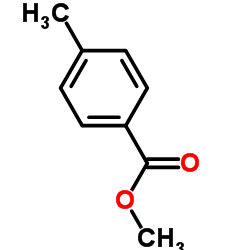 CAS#:99-75-2
CAS#:99-75-2 CAS#:99-94-5
CAS#:99-94-5 CAS#:104-87-0
CAS#:104-87-0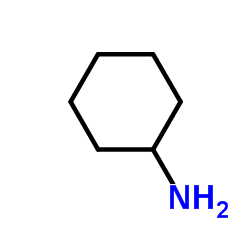 CAS#:108-91-8
CAS#:108-91-8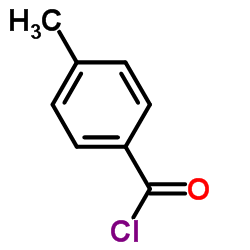 CAS#:874-60-2
CAS#:874-60-2 CAS#:94-08-6
CAS#:94-08-6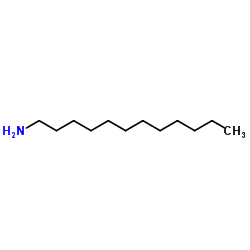 CAS#:124-22-1
CAS#:124-22-1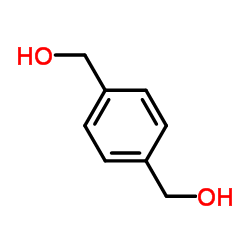 CAS#:589-29-7
CAS#:589-29-7![2-[(4-methylphenyl)methoxy]oxane Structure](https://image.chemsrc.com/caspic/494/18484-04-3.png) CAS#:18484-04-3
CAS#:18484-04-3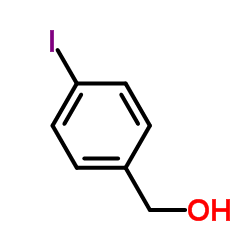 CAS#:18282-51-4
CAS#:18282-51-4![Benzene,1-methyl-4-[(4-methylphenyl)methyl]- structure](https://image.chemsrc.com/caspic/194/4957-14-6.png) CAS#:4957-14-6
CAS#:4957-14-6 CAS#:21895-17-0
CAS#:21895-17-0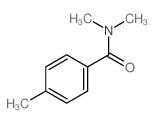 CAS#:14062-78-3
CAS#:14062-78-3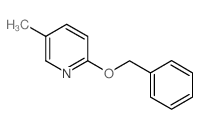 CAS#:92028-39-2
CAS#:92028-39-2 CAS#:4714-21-0
CAS#:4714-21-0 CAS#:4498-99-1
CAS#:4498-99-1 CAS#:78-27-3
CAS#:78-27-3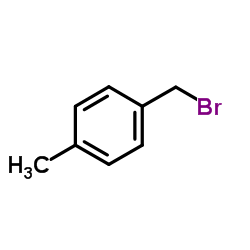 CAS#:104-81-4
CAS#:104-81-4
